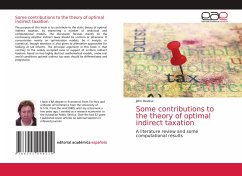The short paper of John von Neumann, "0ber ein okonomisches Gleichungssystem und eine Verallgemeinerung des Brouwerschen Fixpunkt satzes", published 1937 in Vienna in German and translated into English and subsequently published in the "Review of Economic Studies" (1945- 1946) as "A Model of General Economic Equilibrium" is one of the most important contributions to modern mathematical economics, if the rele vance of a paper is judged by the number of contributions which it ini tiates. After the publication of the paper there was a time lag of several years until Economic Theory payed attention to von Neumann's con tribution. One reason was that the new mathematical methods - including the modern theory of mathematical programming which was not developed at that time - made it very difficult to understand the model. An im portant step towards a better understanding of von Neumann's model was the generalization by J. G. Kemeny, 0. Morgenstern and G. L. Thompson, "A Generalization of the Von Neumann Model of an Ex panding Economy" (1956) which also put emphasis on the economic inter pretation. Since its publication the occupation with the von Neumann growth model has become one of the mainstays of the theory of economic growth and the theory of general economic equilibrium. The development was along three lines: l. The theory of multisectoral balanced growth (mainly the conditions of equilibrium growth). 2. The theory of optimal growth, where the most wellknown problem is the so-called "Turnpike theorem".








